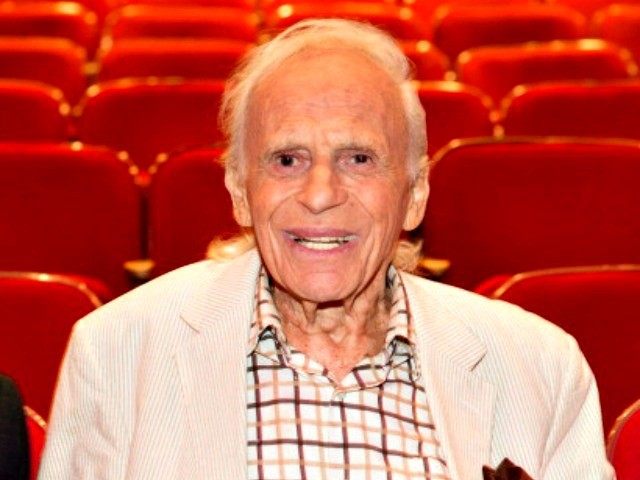If I mentioned the name Ervin Maurice Druckman, how many of you would know who I am writing about? How about Ervin Drake? Would you know who he is? They are one and the same.
I had the privilege and honor of becoming a friend of his and his lovely wife, Edith, in July, 2010 when I did my first performances with a 30-piece orchestra at my Alma mater, Hofstra University.
In the audience that evening, my friend Lennie Triola had told me a gentleman named Ervin Drake was in the crowd. Of course I knew immediately who he was, and I was quite honored and pleased to know that he and his wife would be in attendance.
Lennie is one of the most original and true aficionados of not only Frank Sinatra but of the Great American songbook. He is a Damon Runyon-esque character who knows more than 10 of the most effete New York music critics put together. He also probably weighs as much.
Anyway, after the show, Lennie introduced me to them both. I was struck by their immediate warmth and affection. They complimented me on the show and told me they loved my interpretation of one of the beloved songs in the Great American Songbook.
A Sinatra Classic Is Born
The song was “It Was a Very Good Year,” a song that Ervin wrote the music and lyrics to and which Sinatra had heard on the radio as a folk song by the Kingston Trio. Sinatra then called his arranger and had the arrangement done and recorded, a tune I am sure many of you have heard.
Well, to my surprise, two nights later they both came back to see me perform again, and Ervin left a very moving message for me. He and his bride have subsequently come to my shows whenever I performed in New York – most recently this past July when I sang for 13,000 people at an outdoor concert in Eisenhower Park given by Nassau County Executive Ed Mangano as part of his summer concert series.
Ervin, his wife, and son Jed were there once again, ringside. I loved seeing his smiling face in the audience, and the love and care which his lovely wife Edith bestowed on him. He and his wife got around Manhattan, hitting the night scene and attending events with regularity.
They both took me under their wing, so to speak, and offered loving advice. Here was one of the greats at 95 still with the youthful love of music and the craft he so expertly honored with his talents.
I do not want to cliff note his accomplishment but wish to lay them bare here so you can acquaint yourselves with the kind of artist that makes America unique.
Here’s to you, Ervin, Thank you for your remarkable contribution both as a man and an artist. And to your lovely wife, whom we all embrace in her time of sorrow.
Love to you, RD
* * *
Composer and lyricist Ervin Drake’s career included work as a television producer, songwriting excellence, and a devotion to helping his fellow composers.
He was born Ervin Maurice Druckman on April 3, 1919 in New York City. His schooling included Townsend Harris Hall and the City College of New York, where he studied social sciences and graphic arts. He edited his college’s magazine and penned material for several variety shows. He formally studied music later at the Juilliard School of Music.
His musical career roared to life in 1942 when he wrote the English lyrics to a Brazilian instrumental song by Zequinha Abreu called “Tico-Tico.”
Two years later, he offered similar services for Juan Tizol’s instrumental song “Perdido.” He expanded his work in 1945 when he wrote the words and music for “The Rickety Rickshaw Man,” a song that would go on to sell more than a million copies.
More hits followed, including the spiritual “I Believe” co-written by Irvin Graham, Jimmy Shirl, and Al Stillman. Frankie Laine’s version of the song went to number one on the charts, but it also was covered by other major musicians like Barbra Streisand and Elvis Presley. “I Believe” ended up selling more than 20 million copies overall.
He also was responsible for “A Room Without Windows” (Steve Lawrence), “Across the Wide Missouri,” “Castle Rock” and “Quando Quando Quando” which became a smash for Perry Como.
He wrote the lyric, along with Irene Higginbotham and Dan Fisher, for 1946‘s “Good Morning Heartache” which yielded a classic Billie Holiday recording.
Perhaps Drake’s best-known song is 1961’s “It Was a Very Good Year,” recorded by Frank Sinatra in 1965.
His television work found him writing, composing and producing roughly 700 prime-time network shows like “Sing It Again,” “Songs for Sale,” “The Jane Froman Show” and “The Frankie Laine Show.” He also served as writer and producer of many major TV specials featuring Mike Nichols, Elaine May, Julie Andrews, Ginger Rogers, Eddie Cantor, Nat “King” Cole, Gene Autry, Paul Anka, Polly Bergen, Johnny Mathis, Tony Bennett and Ethel Merman.
Druckman’s Broadway resumé includes writing the lyrics and music for “What Makes Sammy Run?” and “Her First Roman,” based on a play by George Bernard Shaw.
He served as President of the American Guild of Authors and Composers from 1973 to 1982, leading a successful fight for the US Copyright Law of 1976’s passage.

COMMENTS
Please let us know if you're having issues with commenting.